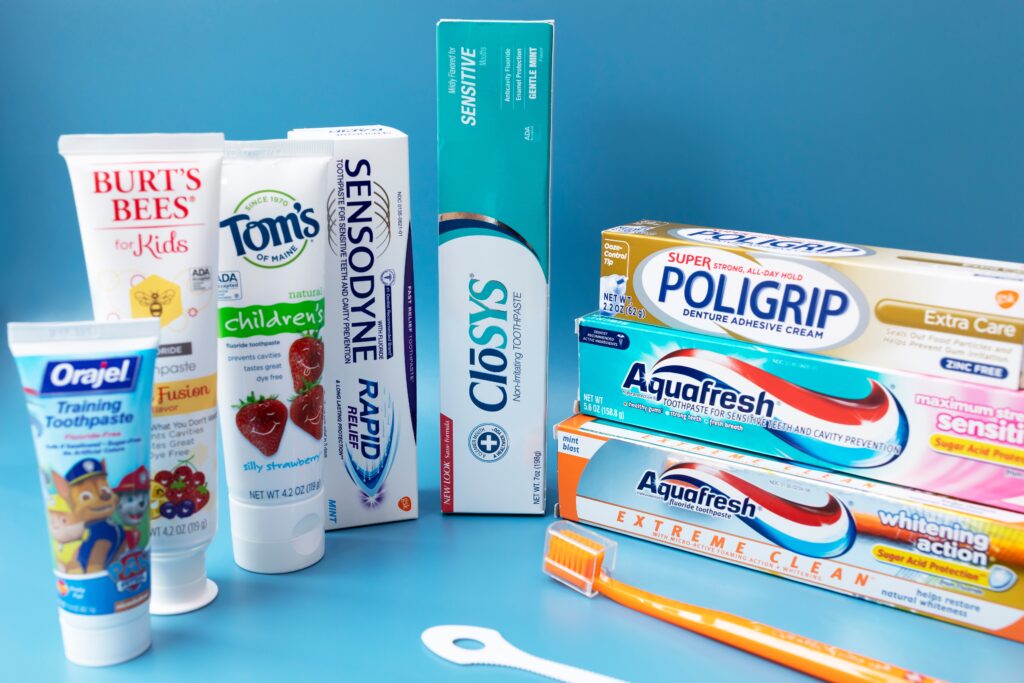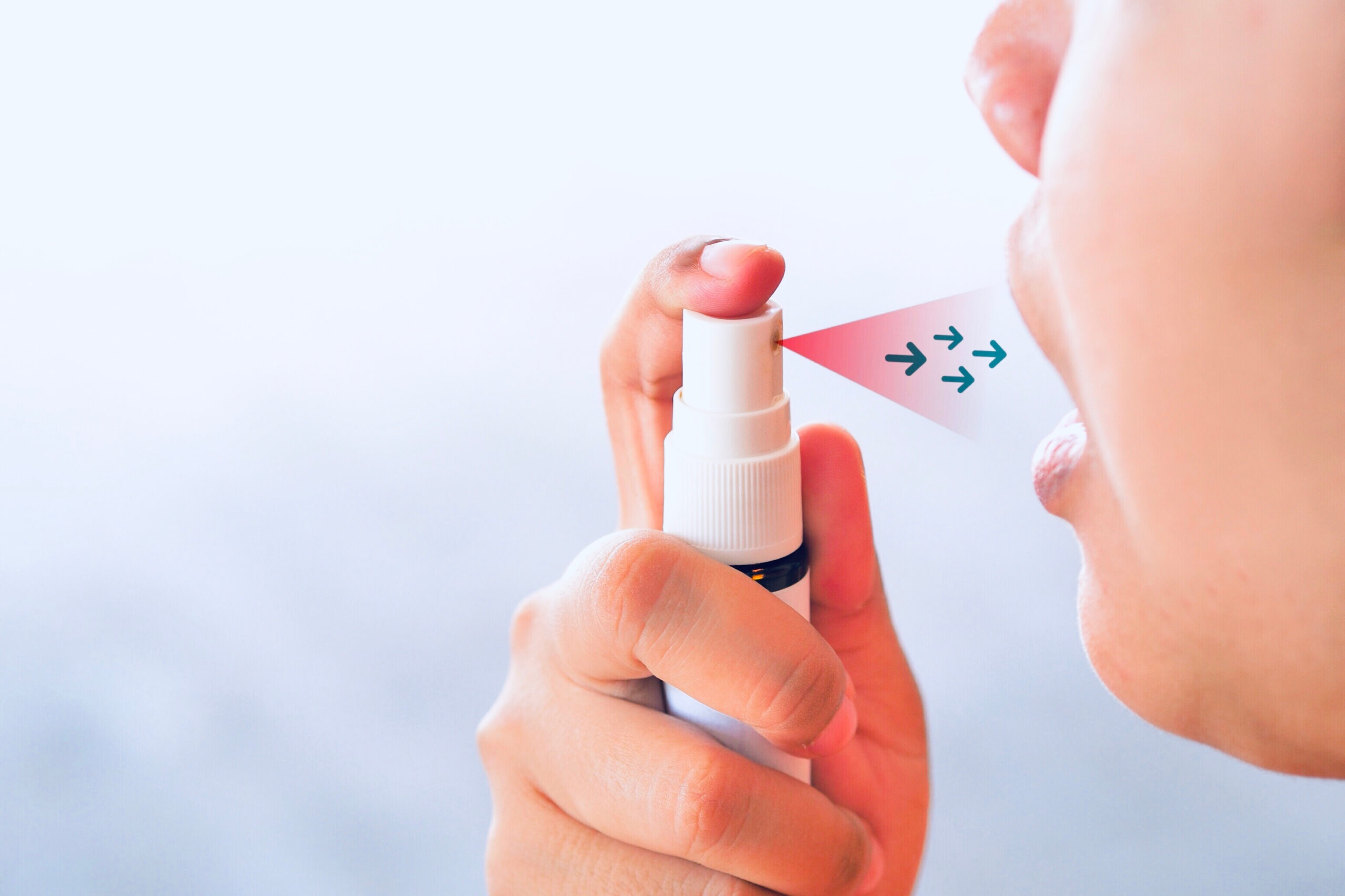Eine gute Mundgesundheit ist entscheidend für unser allgemeines Wohlbefinden und Selbstvertrauen. Ein gesunder Mund ermöglicht uns nicht nur gesundes Essen und Sprechen, sondern trägt auch zu unserem körperlichen und geistigen Wohlbefinden bei. Zahnpasta spielt eine wichtige Rolle in unserer täglichen Zahnpflege. Das Verständnis der wissenschaftlichen Grundlagen ihrer Zusammensetzung hilft uns, die effektivste Zahnpasta für optimale Mundgesundheit zu wählen.
Zahnpasta-Formulierung verstehen

Zahnpasta ist eine spezielle Formel, die verschiedene Inhaltsstoffe kombiniert, um bestimmte Funktionen zu erfüllen. Sie besteht aus einer Basis, Wirkstoffen, Aromen, Süßungsmitteln und Konservierungsstoffen. Jeder Inhaltsstoff in der Zahnpastaformulierung dient einem einzigartigen Zweck, um optimale Reinigung, Kariesprävention und allgemeine Mundgesundheit zu gewährleisten. Immer mehr Zahnpastahersteller bieten heute hochwertige Lösungen an, wie zum Beispiel: Auftragsfertigung oder Eigenmarken-Mundpflegeprodukte, damit Mundpflegeexperten oder Dentalproduktinnovatoren die Zahnpasta effektiv formulieren können.
- Schleifmittel für effektive Reinigung und Fleckenentfernung: Schleifmittel sind in Zahnpasta-Formulierungen von entscheidender Bedeutung, da sie helfen, Plaque, Flecken und Speisereste von der Zahnoberfläche zu entfernen. Zu den üblichen Schleifmitteln in Zahnpasta gehören Calciumcarbonat, dehydriertes Kieselgel und Aluminiumhydroxid.
- Fluorid zur Stärkung des Zahnschmelzes und zur KariesvorbeugungFluorid ist ein wichtiger Bestandteil von Zahnpasta, der den Zahnschmelz effektiv stärkt und Karies vorbeugt. Es remineralisiert geschwächte Zahnbereiche und macht sie so widerstandsfähiger gegen Säureangriffe. Natriumfluorid und Zinnfluorid sind häufig verwendete Fluoridformen in Zahnpasta.
- Feuchthaltemittel zur Feuchtigkeitsspeicherung und Texturverbesserung: Feuchthaltemittel werden Zahnpasta zugesetzt, um die Textur zu verbessern, ein Austrocknen zu verhindern und die Feuchtigkeitsspeicherung zu verbessern. Glycerin und Sorbit sind häufig verwendete Feuchthaltemittel, die für ein sanftes und angenehmes Putzerlebnis sorgen.
- Bindemittel für Konsistenz und StabilitätBindemittel sorgen dafür, dass Zahnpasta die gewünschte Konsistenz und Stabilität behält. Sie helfen, die Zahnpastaformulierung zusammenzuhalten. Zu den gängigen Bindemitteln gehören synthetische Cellulosederivate und Algenkolloide.
- Tenside für Schaumbildung und SpreitfähigkeitTenside sind für die Schaumbildung und die Verteilbarkeit verantwortlich. Sie tragen dazu bei, die Wirkstoffe der Zahnpasta gleichmäßig im Mund zu verteilen und das Reinigungserlebnis insgesamt zu verbessern. Natriumlaurylsulfat (SLS) ist ein häufig verwendetes Tensid in Zahnpasta.
Von Zahnärzten empfohlene Formulierung

- Die ideale Balance der Zutaten findenZahnärzte empfehlen Zahnpasta-Rezepturen, die die optimale Balance zwischen effektiver Reinigung, Kariesprävention und Mundgesundheit bieten. Zahnpasta mit einer ausgewogenen Kombination aus Schleifmitteln, Fluorid und anderen Wirkstoffen sorgt für eine umfassende Mundpflege.
- Bedeutung der Fluoridkonzentration für die Kariesprophylaxe: Die Fluoridkonzentration in Zahnpasta ist entscheidend für die Kariesprävention. Zahnärzte empfehlen Zahnpasta mit einer Fluoridkonzentration von mindestens 1000 bis 1500 ppm, um den Zahnschmelz optimal zu schützen und Karies vorzubeugen.
- Die Wahl des richtigen Schleifmittels für eine schonende und dennoch effektive ReinigungZahnpasta mit sanften Schleifmitteln ist unerlässlich, um Zahnschmelzabbau zu vermeiden und gleichzeitig die Zähne effektiv zu reinigen. Ausgewogene Schleifmittel sorgen für eine gründliche Fleckenentfernung, ohne die Zähne zu schädigen.
- Optimale pH-Werte zur Erhaltung der Mundgesundheit: Der richtige pH-Wert in der Zahnpasta ist entscheidend, um Übersäuerung vorzubeugen und die Mundgesundheit zu fördern. Von Zahnärzten empfohlene Zahnpasta hat einen neutralen pH-Wert, um Zahnschmelzabbau vorzubeugen und eine gesunde Mundumgebung zu erhalten.
- Rolle von Feuchthaltemitteln bei der Vorbeugung von MundtrockenheitMundtrockenheit kann zu Mundgesundheitsproblemen wie Mundgeruch und Karies führen. Zahnpasta mit Feuchthaltemitteln wie Glycerin beugt Mundtrockenheit vor, indem sie die Feuchtigkeit speichert und die Speichelproduktion fördert.
- Auswahl des am besten geeigneten Bindemittels hinsichtlich Textur und Stabilität: Die Wahl des richtigen Bindemittels sorgt dafür, dass die Zahnpasta ihre Konsistenz und Stabilität über die gesamte Haltbarkeitsdauer behält. Das passende Bindemittel trägt dazu bei, die gewünschte Konsistenz zu erhalten und sorgt dafür, dass die Zahnpasta bis zum letzten Tropfen verwendbar bleibt.
- Nicht reizende Tenside für ein angenehmes PutzerlebnisZahnpastaformulierungen mit nicht reizenden Tensiden sorgen für ein angenehmes Putzerlebnis, da sie Schaumbildung und leichtes Verteilen ermöglichen. Sanfte Tenside sorgen dafür, dass die Zahnpasta effektiv reinigt, ohne unangenehme Empfindungen im Mund zu verursachen.
Spezielle Zahnpasta-Formeln für besondere Bedürfnisse

- Whitening-Zahnpasta: Ihr Lächeln sicher aufhellen: Zahnweiß-Zahnpasta enthält spezielle Inhaltsstoffe, die äußere Verfärbungen entfernen und die natürliche Zahnweiße wiederherstellen. Diese Zahnpasta-Rezepturen enthalten oft milde Schleifmittel und Chemikalien wie Wasserstoffperoxid oder Carbamidperoxid, um oberflächliche Verfärbungen zu entfernen und das Lächeln aufzuhellen.
- Zahnpasta für empfindliche Zähne: Linderung empfindlicher Zähne: Zahnpasta für empfindliche Zähne wurde speziell entwickelt, um Zahnempfindlichkeiten zu lindern, die durch freiliegendes Dentin oder Zahnfleischrückgang verursacht werden. Diese Zahnpasta enthält desensibilisierende Wirkstoffe wie Kaliumnitrat oder Strontiumacetat, um Nervenempfindungen zu blockieren und die Empfindlichkeit zu lindern.
- Natürliche Zahnpasta: Chemiefreie Alternativen entdeckenNatürliche Zahnpasta ist für diejenigen interessant, die nach chemiefreien Alternativen suchen. Diese Zahnpasta-Rezepturen verwenden natürliche Inhaltsstoffe wie Natron, Teebaumöl oder Kokosöl aufgrund ihrer antiseptischen und antibakteriellen Eigenschaften. Es ist wichtig, die Vorteile und Nachteile natürlicher Zahnpasta zu bewerten, da sie möglicherweise nicht immer die gleiche Wirksamkeit wie herkömmliche Zahnpasta bietet.
Zahnpasta-Innovationen und neue Trends

- Fortschrittliche Zahnpasta-Technologien für eine verbesserte MundpflegeFortschritte in der Zahnpastatechnologie haben neue Inhaltsstoffe und Rezepturen zur Verbesserung der Mundpflege hervorgebracht. Nano-Hydroxylapatit ist eine neue Alternative zu Fluorid und fördert die Remineralisierung des Zahnschmelzes. Antibakterielle Wirkstoffe wie Triclosan oder ätherische Öle wirken wirksam gegen Plaque und Zahnfleischerkrankungen.
- Kräuter- und Ayurveda-Zahnpasta: Die Kraft der Natur nutzenKräuter- und ayurvedische Zahnpasta-Rezepturen nutzen die Kraft natürlicher Inhaltsstoffe, um die Mundgesundheit zu fördern. Sie enthalten Kräuter wie Neem, Gewürznelke oder Süßholz, die für ihre antibakteriellen und entzündungshemmenden Eigenschaften bekannt sind. Zusätzlich enthalten manche Kräuterzahnpasta immunstärkende natürliche Extrakte wie Aloe Vera oder Grüntee zur allgemeinen Unterstützung der Mundgesundheit.
Die richtige Zahnpasta für Sie auswählen

Bei der Auswahl Zahnpastamüssen mehrere Faktoren berücksichtigt werden:
- Persönliche Bedürfnisse und Ziele für die Mundgesundheit: Bewerten Sie Ihre Mundgesundheitsbedürfnisse, z. B. Kariesvorbeugung, Plaque- oder Verfärbungsentfernung. Überlegen Sie sich Ihre Ziele: Möchten Sie Ihre Zähne aufhellen, die Empfindlichkeit reduzieren oder die allgemeine Mundgesundheit erhalten?
- Empfindlichkeit gegenüber bestimmten Inhaltsstoffen: Berücksichtigen Sie Allergien oder Empfindlichkeiten gegenüber bestimmten Inhaltsstoffen. Manche Menschen reagieren empfindlich auf SLS oder bestimmte Aromen. Daher ist es wichtig, die Etiketten zu lesen und eine Zahnpasta zu wählen, die Ihren Bedürfnissen entspricht.
- Lassen Sie sich von einem Zahnarzt beraten: Es ist auch ratsam, professionellen Rat von Ihrem Zahnarzt einzuholen. Zahnärzte können Ihnen personalisierte Empfehlungen geben, die auf Ihren Mundgesundheitszustand und Ihre Bedürfnisse abgestimmt sind.
Richtige Zahnputztechnik und -routine

- Empfehlungen zur Häufigkeit und Dauer des PutzensZahnärzte empfehlen, die Zähne mindestens zweimal täglich zu putzen, vorzugsweise nach den Mahlzeiten. Um eine gründliche Plaqueentfernung zu gewährleisten, ist eine Putzdauer von zwei Minuten empfohlen.
- Richtige Putztechnik für optimale Plaque-EntfernungFür eine effektive Plaque-Entfernung putzen Sie Ihre Zähne mit kreisenden Bewegungen im 45-Grad-Winkel zum Zahnfleischrand. Achten Sie auf alle Oberflächen, einschließlich der Zunge, und verwenden Sie einen Zahnschaber oder die Rückseite der Zahnbürste für eine sanfte Reinigung. Dies beugt Bakterienbildung und Mundgeruch vor.
Mehr als nur Zahnpasta: Ergänzende Mundpflegepraktiken

- Bedeutung der Zahnseide für die InterdentalreinigungZahnseide ist ein wichtiger Bestandteil der Mundpflege und sollte nicht vernachlässigt werden. Sie hilft, Plaque und Speisereste aus den Zahnzwischenräumen zu entfernen, die mit einer Zahnbürste nicht erreicht werden. Die tägliche Verwendung von Zahnseide in Ihre Routine sorgt für eine umfassende Mundhygiene.
- Die Rolle von Mundwasser bei der Aufrechterhaltung der MundhygieneMundspülungen können als ergänzende Maßnahme zur Mundhygiene eingesetzt werden. Sie sorgen für frischen Atem, reduzieren Plaquebildung und erreichen Bereiche, die mit Zahnbürste oder Zahnseide allein nur schwer zu reinigen sind. Wählen Sie eine Mundspülung, die Ihren individuellen Bedürfnissen entspricht, z. B. eine fluoridhaltige Mundspülung zur Kariesvorbeugung oder eine antibakterielle Mundspülung für gesundes Zahnfleisch.
- Weitere Mundpflegepraktiken, die für eine umfassende Routine in Betracht gezogen werden solltenZu den weiteren Mundpflegemaßnahmen, die zu einer umfassenden Routine beitragen, gehören die Verwendung von Interdentalbürsten, Mundduschen und Zungenschabern. Diese Hilfsmittel helfen, Plaque und Ablagerungen aus schwer erreichbaren Bereichen zu entfernen und sorgen so für eine gründliche Reinigung.
Erhaltung der Mundgesundheit ein Leben lang

- Konstanz in der täglichen Mundpflege: Konsequenz ist der Schlüssel zur Erhaltung einer optimalen Mundgesundheit. Die Einhaltung einer täglichen Mundpflegeroutine mit Zähneputzen, Zahnseide und Mundspülung sorgt für langfristige Vorteile für die Mundgesundheit.
- Regelmäßige zahnärztliche Kontrolluntersuchungen und professionelle ZahnreinigungenRegelmäßige zahnärztliche Kontrolluntersuchungen und professionelle Zahnreinigungen sind unerlässlich, um Zahnprobleme frühzeitig zu erkennen und zu behandeln. Zahnärzte können auch spezielle Behandlungen wie Fluoridbehandlungen oder Zahnversiegelungen anbieten, um die Mundgesundheit weiter zu verbessern.
- Lebensgewohnheiten, die sich auf die Mundgesundheit auswirken: Zur Erhaltung einer optimalen Mundgesundheit gehört eine ausgewogene Ernährung, die reich an Kalzium und Vitamin D ist, und die Vermeidung schädlicher Gewohnheiten wie Nägelkauen, Zähneknirschen und Rauchen.
Abschluss
Das Verständnis der Zahnpasta-Formulierungen hilft Ihnen bei der Wahl Ihrer optimalen Mundgesundheit. Identifizieren Sie Ihre Bedürfnisse, holen Sie sich professionellen Rat und wählen Sie die richtige Zahnpasta. Denken Sie daran: Sie ist Teil einer umfassenden Mundpflegeroutine. Regelmäßige Kontrolluntersuchungen, richtiges Zähneputzen und weitere Maßnahmen tragen zu einem gesunden Lächeln ein Leben lang bei. Holen Sie sich das Wissen für ein strahlendes Lächeln.


